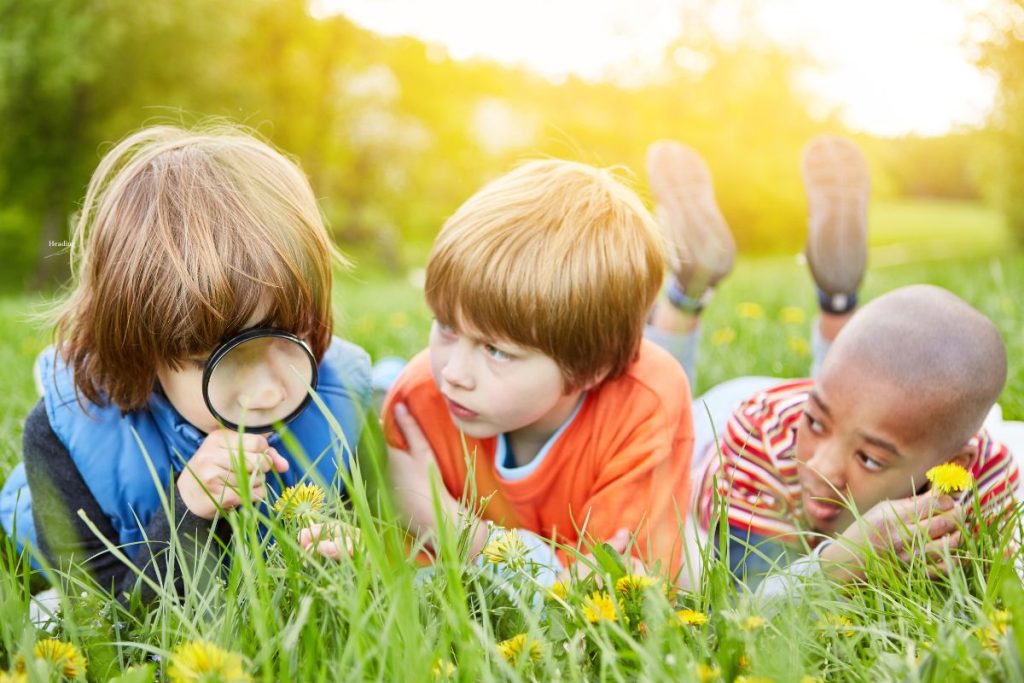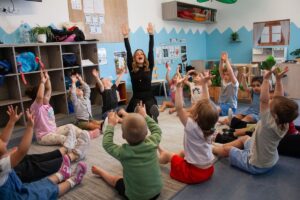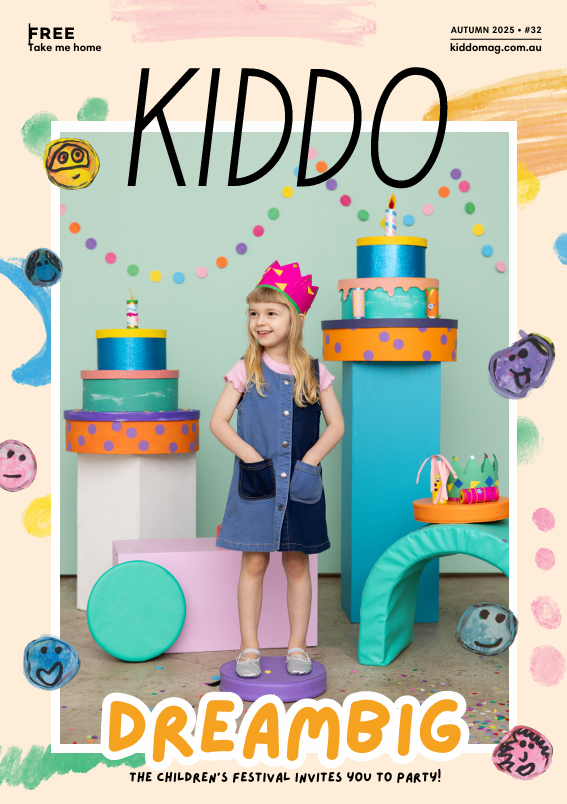WORDS: A/Professor Lyndsey Collins-Praino, Head, Cognition, Ageing and Neurodegenerative Disease Laboratory, School of Biomedicine, University of Adelaide
Back in December, my family got a sneak peek of the Jurassic World by Brickman exhibit at the Queensland Museum (which is on through mid-July, if you happen to be in Brisbane). The combination of Lego and dinosaurs seems guaranteed to be an automatic hit with kids, but I was impressed by how the exhibit encouraged kids to engage deeply with the material. Beyond fun selfie opportunities (who doesn’t want to pose with a Lego T-rex threatening to gobble you up?!), there were multiple hands-on stations designed to peak children’s curiosity, such as adding bricks to Lego maps of the Jurassic World island, creating tiles for a dinosaur mosaic, making dinosaur footprints and assembling and testing an escape vehicle. There was even baby dinosaur Duplo for small dino-fans! My kids spent ages exploring the exhibit and came away full of excitement. At home, they eagerly extended their learning, building their own dinosaurs and seeking out more dinosaur facts. Watching them, it reminded me how naturally curious children are about the world around them. But how can we help to nurture this early curiosity, and why is it so important to do so?
The psychologist Jean Piaget formulated a theory of cognitive development in the mid-20th century that conceptualises children as “little scientists,” who actively learn by observing and interacting with the world around them. This allows children to move through four distinct stages: (1) sensorimotor from birth to 2, in which they use their senses and body movements to understand the world; (2) preoperational from 2-7, in which children develop language and abstract thought and begin playing symbolically (i.e. pretend play); (3) concrete operational from 7-11, in which children learn logical, concrete rules about objects and (4) formal operational from 12+, in which children learn rules to understand abstract concepts and solve problems. While some aspects of this theory have since been challenged (e.g. whether the stages of development are really distinct), it nevertheless highlights the important role that curiosity plays in children’s cognitive development.
Curiosity can help to support learning and deepen understanding, motivating children to ask questions and then actively explore the world around them to seek out answers, drawing critical connections between concepts and correcting misconceptions. Anyone who has spent time around young children knows that they are an endless source of questions, with research showing that they can ask more than 100 per hour! While exhausting for caregivers, this is a critical way that children seek to fill gaps in their knowledge and refine their worldview. Importantly, research has suggested that the question asking and information seeking that stem from curiosity are crucial for deeper learning. In fact, early childhood educators consistently rank “curiosity” as “very important” or “essential” for school readiness, citing it as more important than specific academic skills, like knowing the alphabet or how to count. School outcomes support this. In a meta-analysis of 200 studies across 50,000 students, researchers in the UK reported that the personality trait of curiosity was critical for academic success. The benefits of curiosity can also extend well beyond childhood. Research shows that curious adults are more likely to show greater engagement and better performance at work, be more empathetic and have stronger interpersonal relationships, exhibit better decision-making and critical thinking abilities and even report increased well-being, happiness and life satisfaction.
Importantly, recent neuroscience research has shown that curiosity can enhance learning and retention of information over time. According to one theory, called the PACE framework, when we encounter uncertainty (e.g. a new environment or something we don’t know), we become curious. This leads to increased attention and exploration, as we try to resolve our curiosity and address the gap in our information. This is supported by the release of a brain chemical called dopamine, which is important for motivation and information seeking behaviour. As evidence of this, previous research using fMRI neuroimaging has shown enhanced activity in brain regions important for dopamine release when individuals are curious about something. Dopamine release, in turn, enhances activity in brain regions critical for learning and for memory consolidation, like the hippocampus. This is significant, as it means that our brains are primed to better remember information that we learn while we are feeling curious.
The psychologist Jean Piaget formulated a theory of cognitive development in the mid-20th century that conceptualises children as “little scientists,” who actively learn by observing and interacting with the world around them.
So how can we help to nurture curiosity in our children? This is particularly relevant given that research shows that curiosity naturally wanes as children get older. This can be further impacted by placing an over-emphasis on performance goals, such as demonstrating the acquisition of a specific skill (e.g. standardised tests), as children are more likely to want to avoid unnecessary “distractions” that may slow reaching this goal. Fortunately, there are some easy steps that you can take to foster children’s curiosity:
- Provide diverse opportunities for exploration: the richer the experiences that a child is exposed to, the more their worldview will expand and the more opportunities they will have to formulate questions.
- Place more value on the process than on results: rather than providing specific answers, encourage children to think about how they might approach solving a particular problem or where they might seek out new information; emphasise that there is often more than one way to go about solving a problem (i.e. thinking outside the box).
- Create a safe environment for asking questions and seeking information: make children feel as if their questions/curiosity are valued; assure children that making mistakes is part of the process; support children to work through problem-solving aloud.
- Model curiosity: allow children to see that you are also curious and have things you’d like to learn more about; work through finding the answer to a specific question together.
- Actively encourage children to formulate questions: when having an experience together, prompt children using cues such as, “What questions do you have?” “What do you find most interesting/surprising about this?” or “What more would you like to learn about this?” This can help kids to reflect and engage more deeply with material.
The good news is that there’s so much you can do right now to inspire lifelong curiosity and thirst for knowledge in your children, which will set them up for success in school and beyond. The bad news is that it just might be time to answer that one millionth dinosaur question that you’ve heard before breakfast.
Places/programs to check out in South Australia:
- Check out National Science Week in August, with a month full of activities, covering all areas of science. With many geared towards kids and families, there’s something for everyone (many of them free!). Want more beyond August? Keep an eye out for regular events by groups like The Science Collective.
- Explore some of the great museums right here in our own backyard, such as the South Australian Museum, the Australian Space Discovery Centre or MOD Adelaide, to name just a few. The South Australian Museum, for example, has just announced a new program for kids, the Crocodile Club.
- Get up close and personal with the animals at places such as Adelaide Zoo, Monarto Safari Park and Cleland Wildlife Park. Several of these run additional programs for kids such as A to Zoo Early Learning Program or Bush Buddies.
- Look up at the stars by getting outside with an app, such as Night Sky, attending a Star Party with the Astronomical Society or visiting the Adelaide Planetarium.
- Join the club: There are several great clubs where kids can explore their interests, such as those focused on Lego building (e.g. BRICKS 4 KIDZ), robotics (e.g. RoboRoos) and much more. For those targeted at younger children, check out Little Bang Discovery Club. You can also make your own “science club” at home – many sites offer free science experiments that you can try using common household ingredients.






